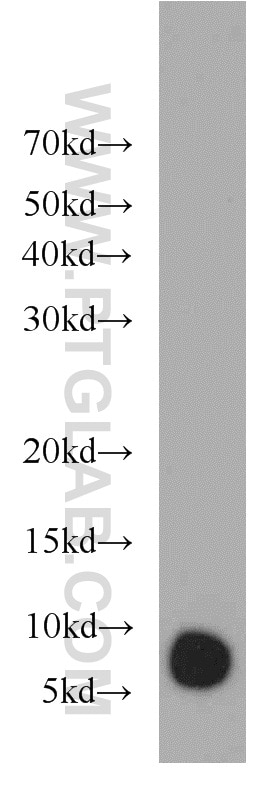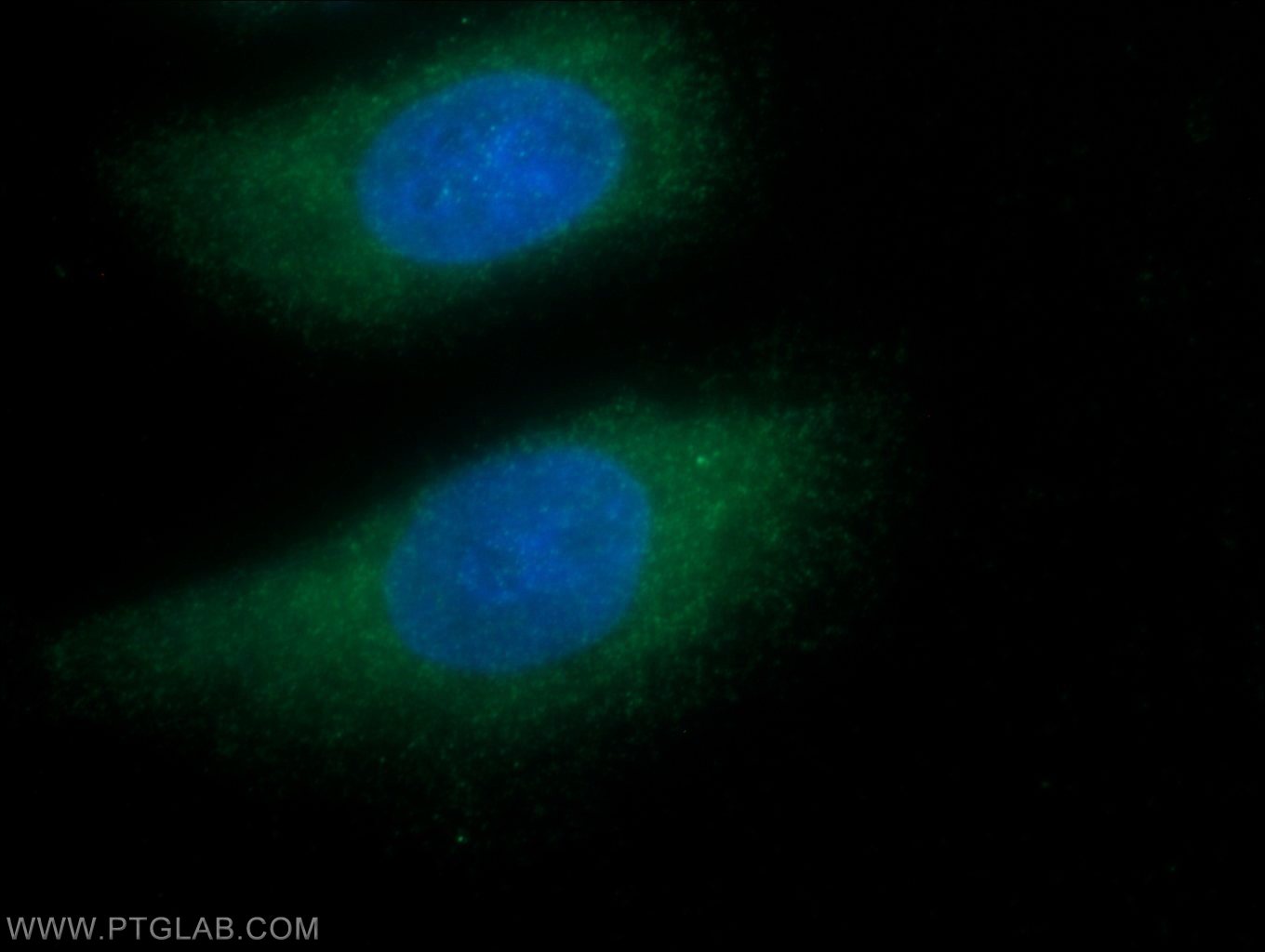Tested Applications
| Positive WB detected in | mouse eye tissue |
| Positive IF/ICC detected in | HeLa cells |
Recommended dilution
| Application | Dilution |
|---|---|
| Western Blot (WB) | WB : 1:200-1:1000 |
| Immunofluorescence (IF)/ICC | IF/ICC : 1:10-1:100 |
| It is recommended that this reagent should be titrated in each testing system to obtain optimal results. | |
| Sample-dependent, Check data in validation data gallery. | |
Product Information
11884-1-AP targets GNGT1 in WB, IF/ICC, ELISA applications and shows reactivity with human, mouse samples.
| Tested Reactivity | human, mouse |
| Host / Isotype | Rabbit / IgG |
| Class | Polyclonal |
| Type | Antibody |
| Immunogen |
CatNo: Ag2488 Product name: Recombinant human GNGT1 protein Source: e coli.-derived, PGEX-4T Tag: GST Domain: 1-74 aa of BC029367 Sequence: MPVINIEDLTEKDKLKMEVDQLKKEVTLERMLVSKCCEEVRDYVEERSGEDPLVKGIPEDKNPFKELKGGCVIS Predict reactive species |
| Full Name | guanine nucleotide binding protein (G protein), gamma transducing activity polypeptide 1 |
| Calculated Molecular Weight | 74 aa, 8 kDa |
| Observed Molecular Weight | 8 kDa |
| GenBank Accession Number | BC029367 |
| Gene Symbol | GNGT1 |
| Gene ID (NCBI) | 2792 |
| RRID | AB_10858628 |
| Conjugate | Unconjugated |
| Form | Liquid |
| Purification Method | Antigen affinity purification |
| UNIPROT ID | P63211 |
| Storage Buffer | PBS with 0.02% sodium azide and 50% glycerol, pH 7.3. |
| Storage Conditions | Store at -20°C. Stable for one year after shipment. Aliquoting is unnecessary for -20oC storage. 20ul sizes contain 0.1% BSA. |
Background Information
G protein subunit gamma-T1(GNGT1) is encoded by the transducin gamma-subunit gene, which localized on huaman chromosome 7q21.3, participating in various transmembrane signaling systems. Particularly, GNGT1 gene is specific to retinal rod photoreceptors. Present polyclonal anti-GNGT1 antibody (11884-1-AP) is produced by immunizing rabbits with full-length chain of GNGT1 and dectects an 8 kDa band in mouse retinal tissue.
Protocols
| Product Specific Protocols | |
|---|---|
| IF protocol for GNGT1 antibody 11884-1-AP | Download protocol |
| WB protocol for GNGT1 antibody 11884-1-AP | Download protocol |
| Standard Protocols | |
|---|---|
| Click here to view our Standard Protocols |






